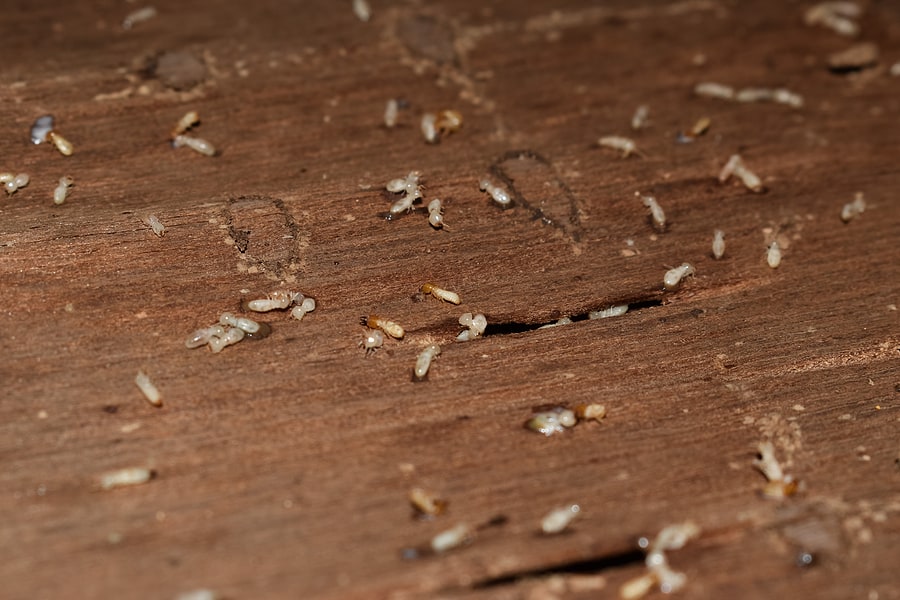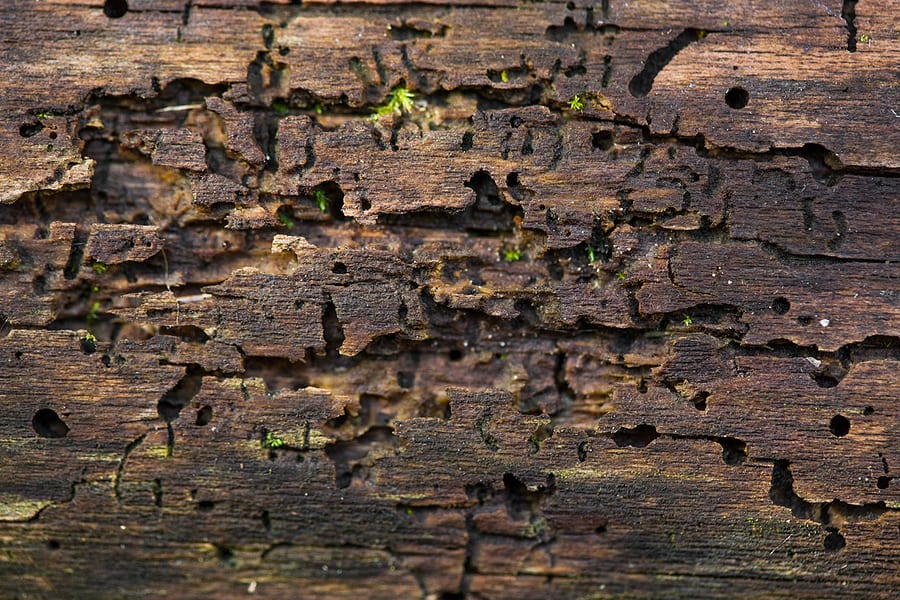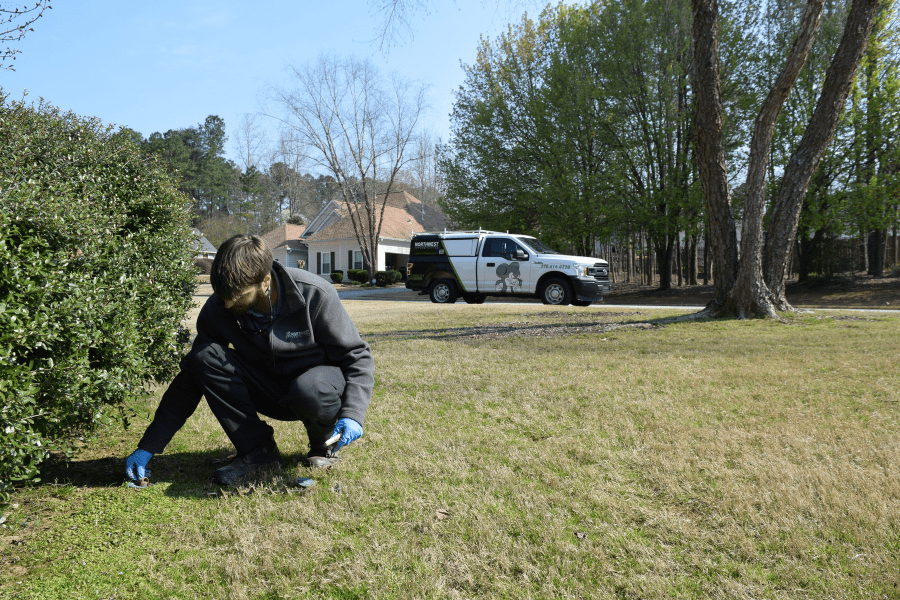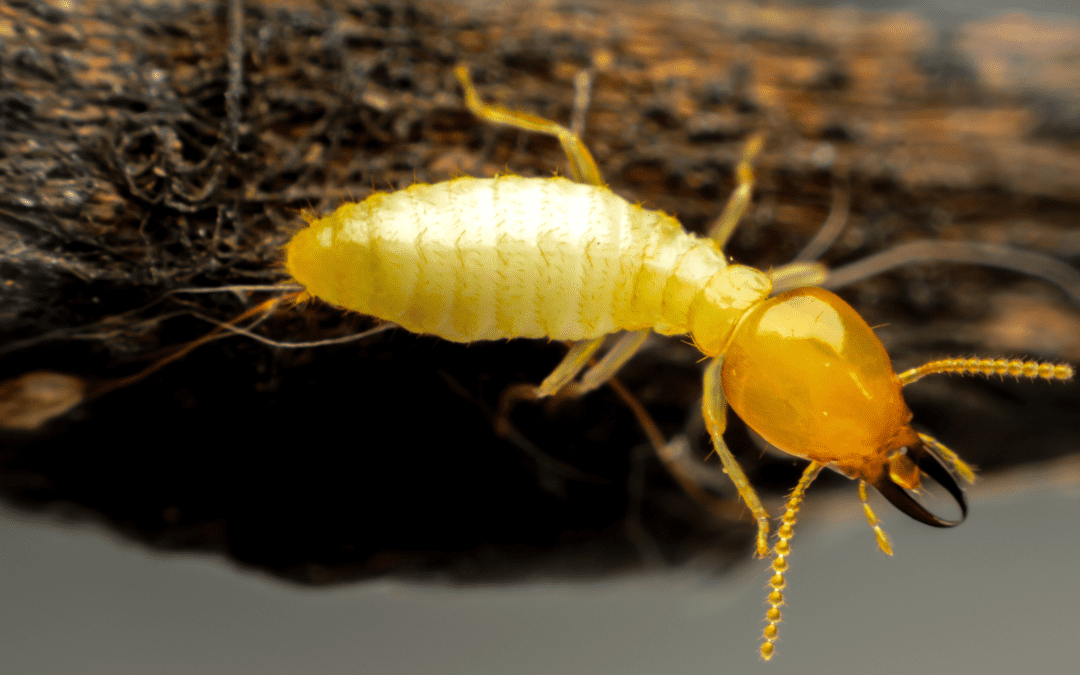READY TO GET STARTED?
REQUEST A FREE ESTIMATE
Fill out the form below or call (888) 466-7849 for a free, no-obligation estimate.

The new year has begun and although the weather is chilly now, the luxuries of living in the south typically means that warmer weather appears sooner than later. This means that termite swarming season is just around the corner, with the earliest swarms beginning in February. Let’s break down what to expect this swarming season.
Termite swarmers, often mistaken for winged ants, are most active during the spring months, when they fly away from their colony to reproduce. These swarmers are attracted to bright, light areas often seen around doors and windows in homes. Fortunately, they don’t cause wood damage, but seeing a group of them around your property typically means a colony is nearby.
The southeastern region of the United States is home to a variety of termites, including the subterranean, drywood, and Formosan species. Subterranean is the most common type of termite found in the southeast. They live underground in colonies that can get up to two million members. They are also known to be found in moist, secluded areas above ground. With their hard, saw-toothed jaws that work like shears, they are known to cause significant damage to properties.
If you suspect termite swarming activity or just want to get a step ahead at termite prevention, contact your local pest control company and schedule your free inspection.

Termites are highly destructive household pests, causing billions of dollars in damages to homeowners annually. Most homeowner’s policies don’t cover termite damage. What options do homeowners have to protect themselves from these pests?
Two options that are available are a termite warranty and a termite bond. These terms are often used interchangeably but they are, in fact, different.
A termite warranty is similar to an insurance policy you take out against termites. It is insured by an insurance company and allows for more coverage against damages. These warranties will also include an agreement for ongoing monitoring and/or maintenance for the length of the warranty term. They also require the termite control company who provides it to treat for termites if they are found on their annual termite inspection during the warranty period. It can also specify if the pest control company will repair any damages from termites or if they will only retreat the home. Some warranties can even be transferred between homeowners (such as during the sale of the home) but others cannot be transferred.
Termite bonds are similar to warranties. The difference between the two is that bonds require the pest control company to hold a specified amount of money in a surety bond.
Some kind of protection against termites and termite damage is beneficial to homeowners. If you are interested in scheduling a termite inspection or taking out coverage against termites, contact your pest control company for more information.

Termites are one of the most destructive pests, causing significant damage to homeowners in the United States each year. Termites often go long periods of time undetected, allowing a termite infestation to proliferate inside your home. But what causes a termite infestation in the first place? What attracts termites to your home?
Termites are attracted to moisture, especially subterranean termites. Damp basements, bathrooms, laundry rooms, kitchens, leaky pipes, and stagnant water around foundations are common areas that termites are attracted to. Rotten or water damaged wood should be replaced immediately. Leaky or broken pipes should also be repaired as soon as they are discovered. Make sure roofs and gutters are cleaned properly and that proper drainage systems are established. Check and repair issues with foundations. Use a dehumidifier to reduce moisture in attics, crawlspaces, basements, and any other rooms where humidity is high.
Termites will feed on just about any type of wood. This includes new wood, painted wood, treated wood, rotted wood, water damaged wood, wood mulch, wallpaper, and shelf paper. As such, care should be taken to reduce access to wood in and around your home. Foliage and mulch should be kept at least 28″ away from foundations. Wood mulch should be replaced with another coverage medium, like rubber mulch or treated cedar. Anywhere wood comes into contact with the sides of your home also provide a bridge termites can use for access. This allows them to make their way inside, even bypassing soil that has been treated with termiticides. Get rid of any vines, trellises, mulch, stumps, firewood, etc. that is close to your home’s foundation. Trim limbs away that touch the roof, as well.
Termites are silent destroyers, eating wood from the inside out, allowing them to establish colonies and infestations before any signs of their presence arise. It is important to recognize the signs of termites so they can be detected earlier before they can cause significant damage. It is also beneficial to have an annual termite inspection performed by a termite control company. These professionals will inspect the interior and exterior of your home, looking for signs of termite activity or previous termite damage. They can then present you with the best termite control options when necessary.
Are Bed Bugs Active in the Winter?
When Is Millipede and Centipede Season?

You might be thinking that since the weather is cooling down, pests won’t be as active. While that’s the case to some, most pests will be making their way indoors to seek warm shelter. Some homeowners even claim to see more pests in their home once the weather cools down. Here are some of the most common questions about winter pest control.
Which Pests Are Most Active?
Surprisingly, there are some pests that survive throughout the colder months. The main ways they stay alive are through hibernation, migration, and overwintering. Overwintering pests are our main issue in the winter. These are the pests that will migrate indoors instead of to a different part of the region.
Some of the most common pests still seen in the winter are cockroaches, rodents, and termites. Most of the time their activity might slow, but they are still nearby and ready to get back into full gear once the weather warms up.
How Often Should Pest Control Be Done?
The goal of pest control is to keep pests away and prevent infestations. Therefore, quarterly pest control is important. If you miss your regular pest control in the winter, it can create an easy opportunity for pests to get inside.
Winter is the best time for a barrier to be put in place. Some pests including spiders, cockroaches, and rodents can be a bigger issue this time of year, so getting ahead of schedule is key.
If you are ready to set up your winter pest control, give your local pest control company a call and they can help you set up a customized plan to prevent these pests.

It’s no surprise that termites are still active in the fall. The only factor that changes termite activity in the fall season is their tendency to burrow deeper into the ground. However, if these pests burrow their way into your home, they won’t need to dig deeper to find warmth and instead will infest.
Continuing termite control into the colder months will help to protect your home up until spring begins again. Be sure to keep up with termite control to lessen the chance of termites swarming in the spring and summer months.
Regardless of the season, there are common signs of termite infestations to look for in your home, including:
There are a few steps for termite protection you can take in and around your home. Make sure all water and gas lines are sealed adequately. Fix any leaky faucets or appliances and get rid of any standing water. Try to eliminate any cellulose material, as this is a termite’s primary food source.
If you suspect you have a termite problem or want to stay proactive against them, reach out to your local pest control company to receive a free termite inspection and discover the best plan of action perfect for you and your home!